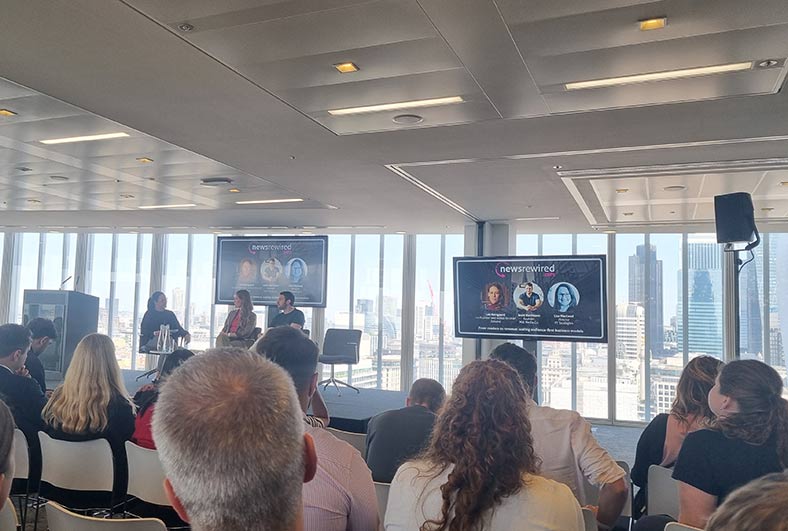Blog / Events / Journalists
The key learnings from the Newsrewired conference

How are publishers and organisations adapting in the current news climate? The rise of AI and increased distrust in the media in recent years means that news outlets are looking for different ways to connect with readers and change their business models in the process. At the Newsrewired conference last week, journalists and media professionals discussed what they are currently doing to appeal to audiences and what the future looks like for their organisations.
Putting the readers first
Providing audiences with timely and relevant information means using the right tone and format for them – Naja Neilsen, media director at SVT, believes that people want to be in charge of their own choices. Due to the way people interact with AI tools, a more conversational approach needs to be developed:
‘AI is our competition. It’s fast, it’s clear, it’s giving me answers. A lot of people are already choosing these tools. I think we need to experiment with this type of conversational journalism. It’s no longer a one way communication from us to an audience; it’s a back and forth.’
Newer publishers are already making sure that readers are the focus, with publishers such as Zetland Media in Denmark and Mill Media in Manchester identifying that the public are currently overwhelmed with too much information and news. Both publishers prioritise ‘a low volume form of journalism’.
Joshi Herrmann, founder of Mill Media, says that the business he has created is ‘based around the idea of trying to give people a small amount of storytelling that is really meaningful, creating an emotional connection and giving them the context they need to live their lives’.
Preparing for the digital future
The media industry has changed a lot since the height of print journalism in the 1990s and while digital journalism has been here for a while now, Jonathan Levy, managing director and executive editor at Sky News, is preparing for the future of news by focusing on digital:
‘Earlier this year, we launched the Sky News 2030 strategy, which is about a premium video first newsroom built for the digital future. Video is where we’re strong and that’s where we think we’ve had an advantage. We also believe that video consumption is on the up.’
Other publishers are also looking at their digital offering. For The Times, it’s a lot of visual storytelling and graphics and data journalism which is resonating with their audience. The New Statesman have focused on podcasts, with these also being available in video format on YouTube. Local independent outlets like Wiltshire 999s and Ipswich.co.uk are digital only, with the former performing well on TikTok among younger audiences.
For Lea Korsgaard, co-founder and editor-in-chief of Zetland, tech plays an important role in that digital future:
‘Technology is a core part of the product. I think a lot of mistakes in journalism for the past twenty years have been to say “we’re in the digital space now so we can concentrate on content”, forgetting that the experience is also distribution and the way the audience meets the content. In the Danish newsroom, we have 35 journalists and editors and eight people on the tech team.’
Breaking down silos
Some publishers have been producing content for a very long time – for example, The Times is 240 years old – and different parts of the organisation have become siloed from each other. Tracy Yaverbaun, general manager of The Times and The Sunday Times, explained how breaking these silos down is key moving forward:
‘As a company, we’ve been very much rooted in print and they are very hard silos to break down. But the lines between content and product are blurring and the ad hoc squad is really delivering for us, whether it’s a new live experience something within our app or just social storytelling formats that are new, breaking silos is critical to success.’
Chris Stone, head of podcasts and video at the New Statesman, found a similar situation when he started his role. Initially, podcasts and video were treated as two separate things. His thinking shifted, and by making a podcast ‘the spine of all multimedia output’ helped align all coverage.
The chance of silos forming is even greater for global organisations. Reuters found a way around this, as Simon Robinson, executive editor, explained:
‘We’ve had a system of secondments and it’s happening more and more now. At first, editors and managers were very resistant to it because they see it potentially as a loss on their desk. But the more it’s happened, the more people have embraced it because it’s breaking down silos and creating a more joined up and coordinated organisation.’